Facing the wild North Sea and the Pentland Firth lies the region of Caithness. The most north easterly part of the UK, Caithness has a dramatic coastline, stunning beaches and surf spots, 1000s of seabirds, and miles and endless miles of blanket bog (the internationally recognised Flow Country) and is part of the famous North Coast 500. Here’s my guide to visiting Caithness Scotland.
This post uses affiliate links. Thank you for supporting my site!
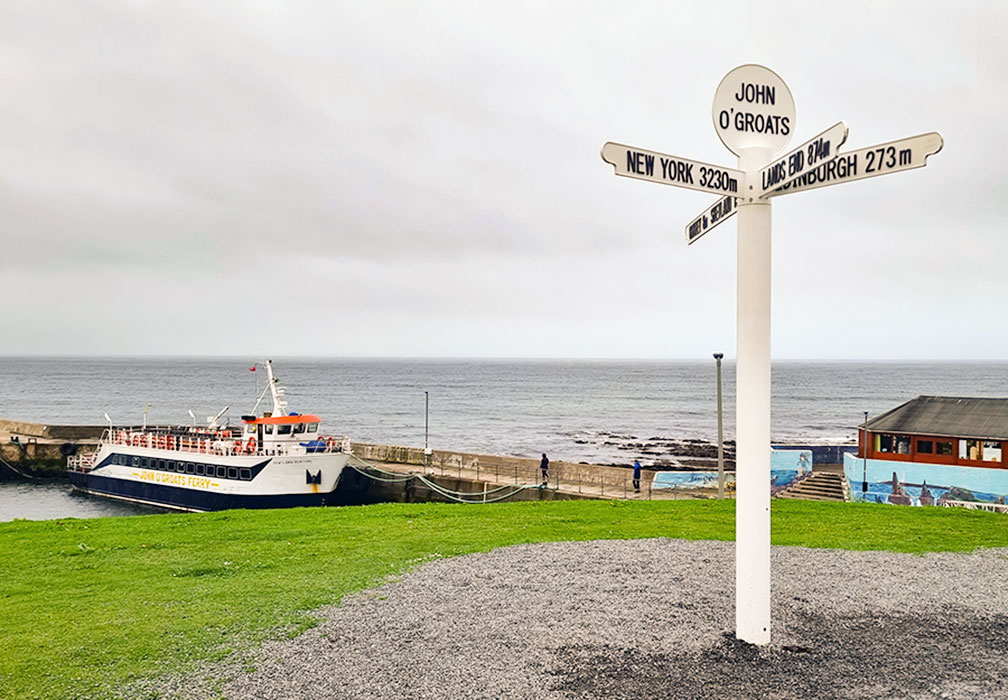
Top 10 things to do in Caithness Scotland
- Dunnet Head and Lighthouse – at the most northerly tip of the UK is the Dunnet Bay peninsula and nature reserve. Managed by the RSPB, Dunnet Head is home to thousands of seabirds including puffins!
- Visit John O’Groats – famous for being the most northerly village in the UK, John O’Groats has cafes and restaurants, a harbour for the ferries to Orkney and of course – the famous sign which was installed in 1964 to mark this ‘Journey’s End’. Make sure you take a photo of the sign!
- Walk to Duncansby Head Lighthouse and Stacks – take a walk to view Duncansby’s huge sea pyramid stacks and Lighthouse. The Pentland Firth is nicknamed the ‘Hells Mouth’ by sailors – the Atlantic Ocean meets the North Sea around the Pentland Skerries islands – leading to huge swells, eddies and dramatic tides – the tides even have names including the Bore of Huna and the wells of Tuftalie!
- Climb down the Whaligoe Steps to Whaligoe Haven Harbour – climb down 250 metres of sea cliffs to reach the tiny Whaligoe Haven which once supported 14 herring boats. Watch out for the weather – descending the 365 steps into sea haar can feel very spooky indeed.
- Discover the Caithness Brochs – no one knows what Brochs (Iron Age structures) were really used for, just that there are lots of them. A broch is a tall circular tower with huge thick walls and there are over 200 brochs to discover across Caithness – my favourite is Dunbeath Broch which can be explored on the beautiful Dunbeath Strath Heritage Trail.
- Explore the Flow Country – a very rare type of peatland, the Flow Country is the most extensive blanket bog system in the world. Made up of a series of 400,000 hectares of peat bogs and pools, the bog has been growing for more than 10,000 years. There is now a bid to make the Flow Country as a World Heritage Site to help protect this internationally recognised site. You can visit the RSPB Forsinard Flows Visitor Centre, and walk the Dubh-lochain trail (1 mile) to the Flows Lookout Tower, or the longer Forsinain trail (4 miles).
- Cross over to Bucholie Castle – we could debate for hours which is the best of the Caithness castles, from the instagram-famous Keiss Castle or the precarious access Castle Sinclair Girnigoe. My favourite is Bucholie Castle, which is accessed across a walkway with sheer 100m drops on each side – don’t try to visit in bad weather! Built by Sweyn Asliefson the notorious pirate and robber in about 1140 and later remodelled by the Mowat Family until 1661.
- Go inside 5000 years of history at the Grey Cairns of Camster – a pair of Neolithic tombs (Caster Long and Camster Round) built more than 5,000 years ago located near Lybster. Amongst the oldest structural remains in Scotland, the Grey Cairns of Camster were constructed in the third or fourth millennium BC.
- Climb Morven – the highest point of Caithness, Morven is a mighty conical hill with fabulous view of the surrounding Flow Country. Nearby, Maiden Pap is a Morven in miniature, although much steeper. You can climb both on this Morven and Maiden Pap walk.
- Visit the Castle of Mey – more a palace than a castle, the Castle of Mey was purchased by the Queen Mother in 1952. The castle has lovely gardens and homely rooms – the castle was used by the Queen Mum as her holiday home!
- Find a huge sea stack – I can’t just recommend one sea stack in Caithness as there are many – from the most famous at Duncansby to crossing over to the mighty Brig O’Stack sea cave near Wick, Clett Rock near Thurso, the stack which gives Staxigoe village its name and the locked sea stack (a rare stack surrounded by a sea inlet) at Wifie’s Geo.
- Photograph the Caithness mills – dotted throughout the Caithness landscape are mills – Caithness has long been a grain-producing region and there are many watermills to discover including at the village of Ham on the north coast, a fully restored mill at Forse, and a particularly popular mill at Westerdale.
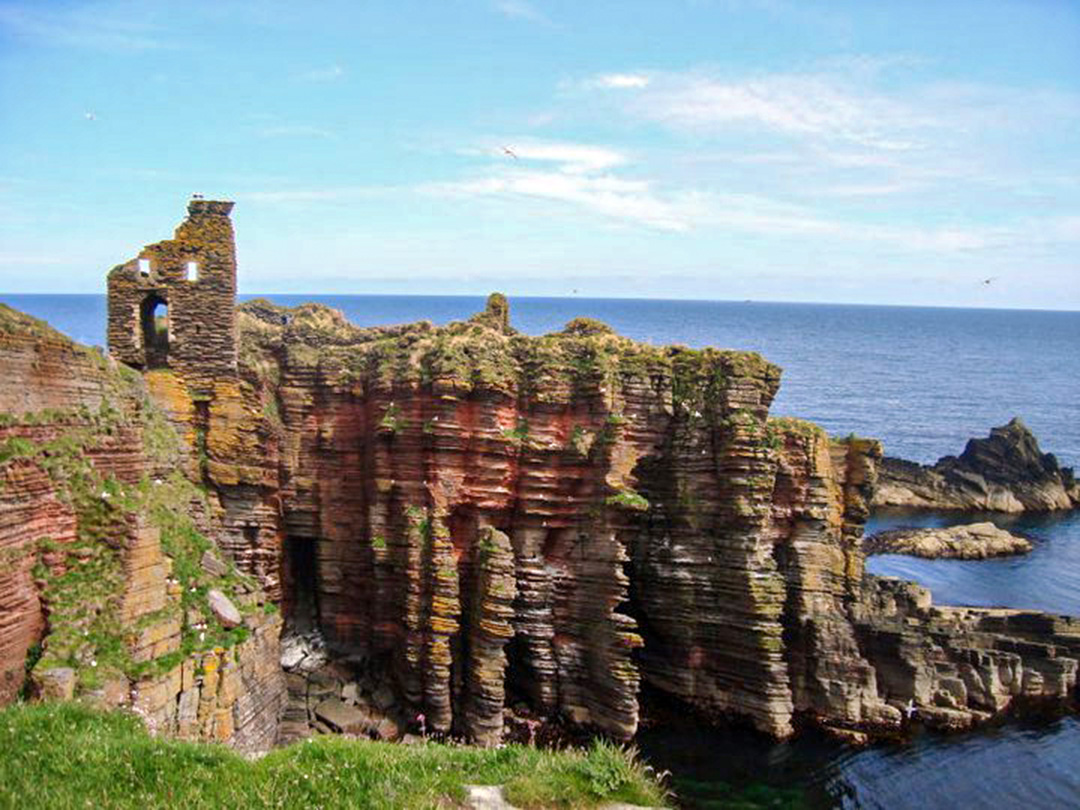
Got longer? Here is how to plan a visit to Caithness
Whilst Caithness is regularly visited as part of the North Coast 500 road trip, it is a fantastic destination in its own right. With 1000s of years of history to discover – from iron age brochs to medieval castles – and fabulous beaches, not to mention it is the most northerly part of the UK.
Caithness Map
Looking for a Caithness Map? Check out my guide to things to do in Caithness Map.
The need to know before you visit
The history of Caithness stretches back thousands of years – from the 5000-year-old Cairns of Camster to iron-age brochs to the Highland Clearances in the 18th century.
The earldom of Caithness was held by the Norse earls of Orkney until 1231 and Norway only recognised Caithness as Scottish at the Treaty of Perth in 1266.
Caithness’ means ‘Cat’ ‘Ness’ or headland of the Catt people – who were a tribe of Picts in the Middle Ages. Also called Katanes by the Vikings, the name eventually morphed into Caithness.
Today Caithness is sparsely populated – only 38,267 people live in Caithness – with a population density of 5 people per km, much lower than the rest of Scotland at 70 people per km.
Most of the region is made up of blanket bog – otherwise known as the Flow Country – with 400,000 hectares of peatland. The land is farmed – crofters have carved out a living here for hundreds of years on ‘straths’ cut through the peatland.
How to get to Caithness
By car – most visitors these days to Caithness will be driving the North Coast 500, but it is worth getting off the main roads and exploring the interior of this vast region. Inverness to Thurso is around 2.5-3 hours drive.
By train – the Far North Line takes you across Caithness to Thurso and Wick. It is one of the best scenic rail journeys in Scotland with fabulous views of the coast and Flow Country, including a stop at Foisinard.
Towns and villages – where to stay in Caithness
The main towns in Caithness are Thurso and Wick but there are lots of hamlets, harbours and villages to discover:
Thurso – the most northerly town in mainland Scotland. A popular stop on the North Coast 500, or before a trip to Orkney, the town is home to around 8000 people.
‘Thurso’ means ‘Thor’s River’ or ‘Bull’s River’ in Old Norse, and has a long history all the way back to the Vikings in the 900s. The town is even mentioned in the famous Orkneyinga Saga (the History of the Earls of Orkney) from the 1100s. Nearby the village of Castletown has a lovely harbour. Read more: Things to do in Thurso
Looking for hotels in Caithness?
In Thurso, stay at Ulbster Arms Hotel in Hawick, Forss House, Thurso is a stunning luxury property, go self-catering at the lovely The Herdsman’s House or B&B on the seafront at The Marine. The Braeside Retreats are modern glamping pods or in nearby Castletown book into the Castletown Hotel.
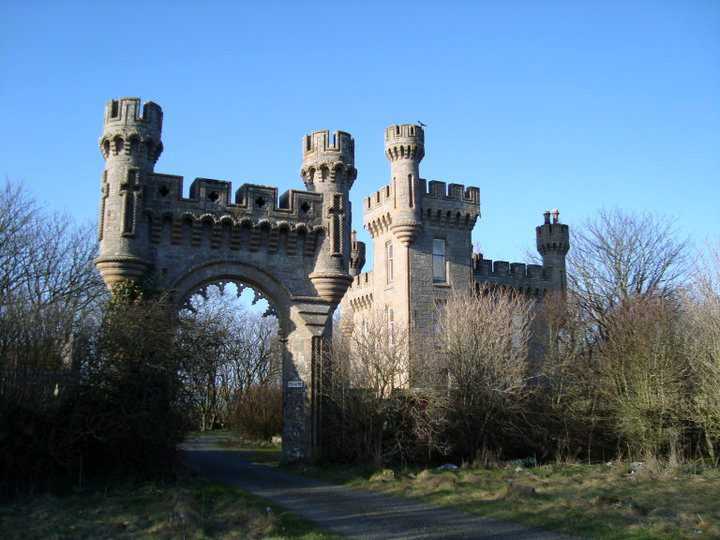
Wick – Once a Viking stronghold – Vik (or Wick) means bay in Norse, Wick sits either side of the River Wick as it flows into the sea. The town of Wick is actually made up of two towns – Wick and Pultneytown (which the distillery is named after) and was once one of the busiest herring fishing ports in Scotland. In Wick stay at the lovely Mackays Hotel.
Scrabster – one of the busiest ports in Scotland, Scrabster is full of fishing boats and industrial craft serving the North Sea renewables and oil and gas industries. The harbour is also home to the ferries to Orkney and is regularly visited by cruise ships. The harbour is a great spot to eat seafood – try the Captain’s Galley Seafood Restaurant or Bydand. One of my favourite walks is from the harbour to Holburn Head to see the blowholes with views of Orkney.
Other villages to visit include Helmsdale and its museum, Dunnet, a small village near Dunnet Head with a lovely beach, Reay which is near Sandside Beach, Lybster village and harbour, Latheronwheel with its fairy glen walk, Staxigoe which means “the inlet of the stack” (yes there is a huge sea stack in the village), Keiss which was featured on The Crown tv show and is home to the famous castle, and Ham with its corn mill.
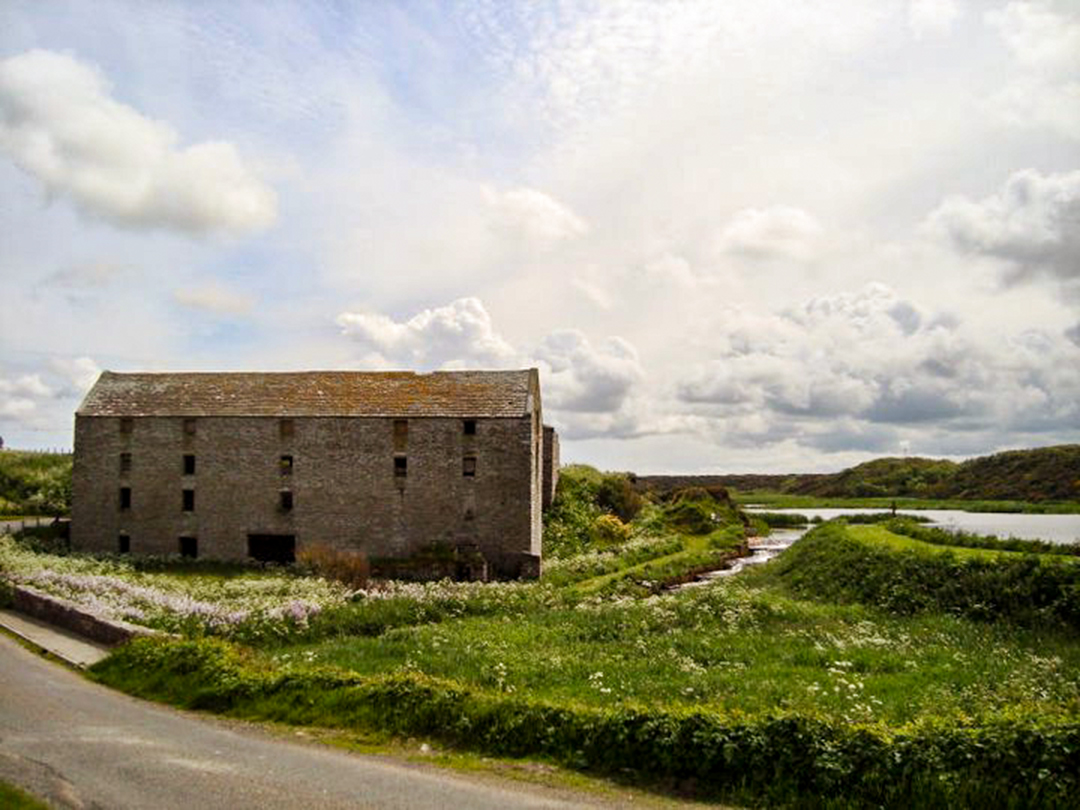
At John O’Groats try the Natural Retreats, in Keiss the Sinclair Bay Apartments, in Mey stay at The Mey Hotel, in Dunnet book into the Dunnet B&B Escapes modern cabin style B&B near Dunnet Head and John O’Groats, or Northern Sands Hotel. In Strathy – try the Strathy Inn or the Strathy Bay Pods. In Dunbeath I love Granny’s Cottage or the Dunbeath Coastal Retreat. In Lybster – North Star Glamping or Acarsaid B&B
In a camper van? Stop for the night at Dunnet Bay Campsite with its amazing beach. Camping is also available at Windhaven Cafe. Thurso is nearby for supplies and bars and restaurants.
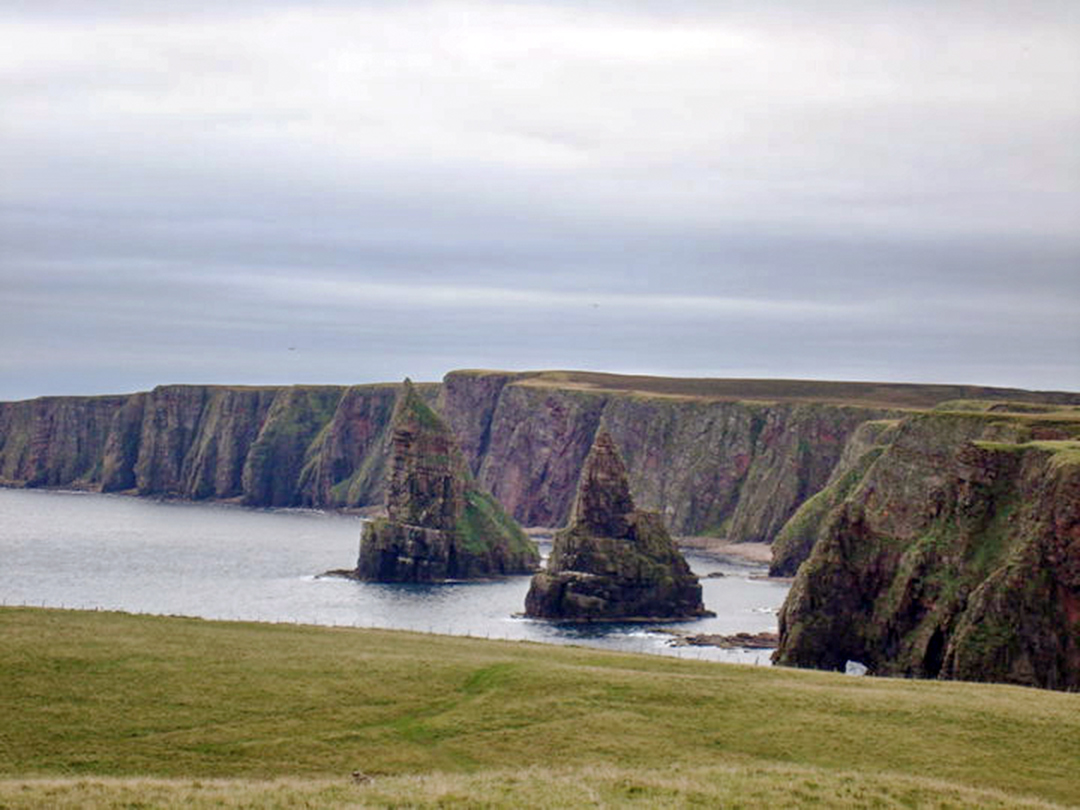
Caithness history and heritage
Love history? Well, then Caithness is your dream destination. From picts to neolithic remains, standing stone and brochs, mediaeval castles to the more recent Highland Clearances there is so much to discover in Caithness.
Find out more about the region at:
- The North Coast Visitor Centre – discover Caithness’s history and culture, along with a cafe at the North Coast Visitor Centre (Caithness Horizons) including the areas Pict and Viking connections, along with the history of the Flow Country.
- The Timespan Museum, Helmsdale – learn all about the Highland Clearances which happened in Caithness.
- The Wick Heritage Centre offers an introduction to life in Wick.
- The Dunbeath Heritage Museum – find out more about the archaeological remains around Dunbeath.
- The Waterlines Heritage Centre – celebrates the 19th and early 20th-century fishing industry in Lybster and has a cafe.
- Nucleus: The Nuclear and Caithness Archive – home to the archives of the UK civil nuclear industry.
- Laidhay Croft Museum – visit a Croft house to see how the people of Caithness lived 250 years ago alongside a tea room. You can also visit Mary-Ann’s Cottage, near Dunnet, a croft house built in 1850.
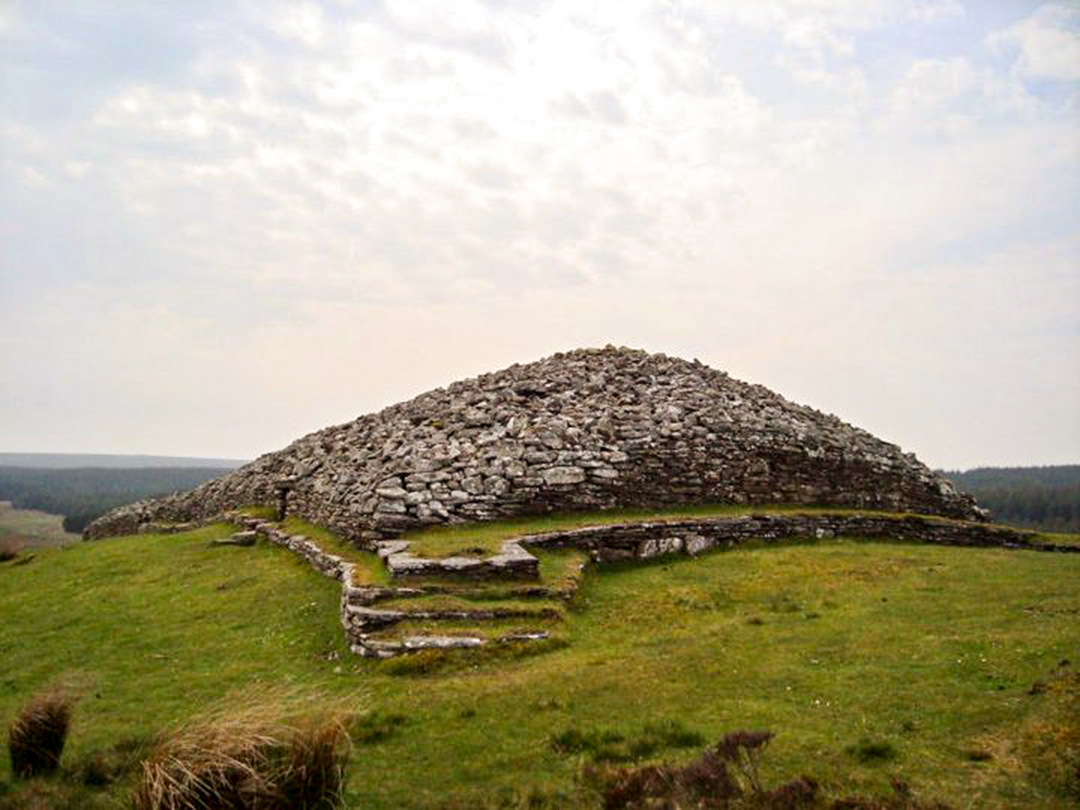
Caithness brochs, cairns and standing stones
Dating from the iron-age, brochs are tall circular dry stone towers with huge thick walls. The word broch might mean fort but they are just as likely to have been the stately homes of their times. No one really knows what Brochs were really used for, just that there are lots of them – there are over 200 brochs to discover across Caithness. The best brochs to visit in Caithness are:
Achvarasdal Broch – between Thurso and Reay and one of the largest brochs in Scotland with a diameter of 9.8 metres with 4m thick and 1.6m high walls and a narrow entrance passage. The broch has been opened up and restored by the Broch Project.
Dunbeath Broch – one of the best examples in Caithness, Dunbeath Broch is over three metres high and still contains remnants of cells (small rooms). There are nine brochs in the Dunbeath area and you can explore via the beautiful Dunbeath Strath Heritage Trail.
Nybster Broch – half-way between Wick and John O’Groats is Nybster where there is a lovely cliffside walk out to the Nybster Broch which sits out on a dramatic promontory. With 4m thick walls and an internal diameter of 7m, Nybster Broch also has lots of outbuildings. Nearby you can visit the Caithness Broch Centre.
Things Va – with a Viking name, Things Va is thought to have been a Viking meeting point – Thing-vollr’ is Norse for a local court or assembly. It is also one of the biggest brochs in Caithness at 30 metres and is a short drive from Thurso.
Yarrows Broch – follow the Yarrows Archaeological Trail to find the Broch of South Yarrows on the banks of the Loch of Yarrows. Along the trail, you can also spot Neolithic chambered cairns, several bronze-age houses, and standing stones.
Ousdale Broch – one of the best examples of an Iron Age Broch in Caithness, Ousdale is located on the southern boundary of Caithness with Sutherland.
Wag of Forse – more than just a broch, Wag of Forse is an Iron Age settlement. There is a lovely cafe on site at Forse of Nature.
Caithness is not just famous for brochs, there are lots of examples of burial cairns and standing stones to discover:
The Grey Cairns of Camster – a pair of Neolithic tombs (Caster Long and Camster Round) built more than 5,000 years ago located near Lybster. Amongst the oldest structural remains in Scotland, the Grey Cairns of Camster were constructed in the third or fourth millennium BC.
Hill O Many Stanes – just why 200 wee stones were placed in rows in a fan-shaped pattern up to 4000 years ago? You can visit the Hill O Many Stanes near Wick.
At Strathnaver follow the Strathnaver Trail which links and interprets 29 archaeological sites.
Other standing stones in Caithness include the Buldoo Standing Stone which is 12ft high and located close to Dounray. Near Castletown is the Stone Lud Standing Stone which is claimed to be the gravestone of Ljot Thorfinnsson (10th century earl of Orkney) and stands at 10ft high.
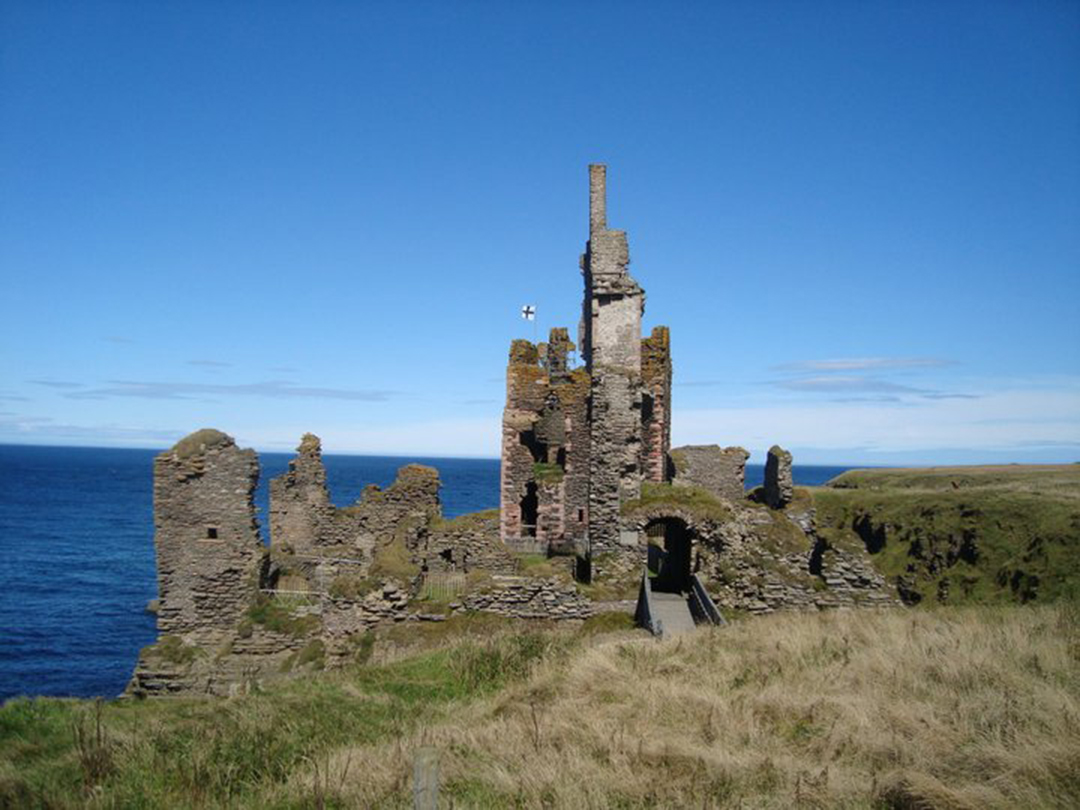
Caithness castles
It is thought that Caithness once had around 50 castles – there are around 30 still standing, some of which are private homes, and most of which are now dramatic ruins. Here are my favourites:
The Castle of Old Wick – perched on dramatic cliffs, the Castle of Old Wick is one of Scotland’s oldest castles.
Bucholie Castle – accessed across a walkway with sheer 100m drops on each side – don’t try and visit in bad weather! Bucholie Castle was built by Sweyn Asliefson the notorious pirate and robber in about 1140 and later remodelled by the Mowat Family until 1661.
Castle Sinclair Girnigoe – near Wick is a spectacular ruin.
The Castle of Mey – previously the home of the Queen Mother in Scotland, you can now tour this royal palace and garden.
Thurso Castle – visit the ancestral home of the Earls of Caithness with an impressive gatehouse.
Old Keiss Castle – one of the most dramatically located castles in Scotland, Old Keiss Castle is popular with Instagrammers – and you can see why!
Caithness Beaches
Caithness has some of the best beaches in the world – well in my opinion! Here are some of the best ones to visit and a few hidden gems:
- Melvich Beach – one of the north coast’s most stunning beaches, it is just a short walk from the road to Melvich Beach. You can also walk to the lovely harbour at Portskerra.
- Strathy Point Beach/Strathy Point Lighthouse – a great spot to see dolphins and whales in the summer months.
- Farr Beach – a beautiful narrow bay near Bettyhill
- Sandside Bay Beach – a lovely beach beside Reay Golf Course and Sandside Harbour at Fresgoe.
- Peedie Sands – walk here from Dwarwick pier, near Dunnet along the coastal path – a north coast hidden gem.
- Thurso Bay – the Thurso town beach, popular with surfers.
- Dunnet Beach – a lovely sweep of sand, often deserted.
- Bay of Sannick – between John O’Groats and the Lighthouse at Duncansby Head is the sandy sweep of the Bay of Sannick.
- Sinclair’s Bay – a huge sweep of sand with a castle at each end – Old Keiss Castle to the North and Ackergill Tower to the south.
Wild, windswept and beautiful, a visit to Caithness will always leave you wanting more.
Love, from Scotland x
